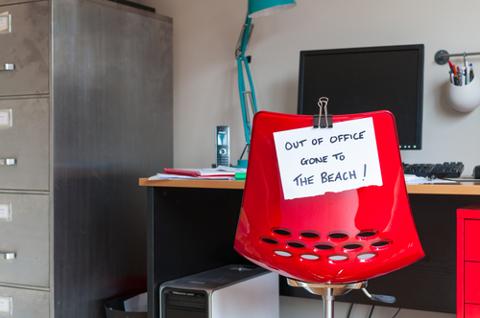
"Work-Life Balance" has been a topic of discussion for years. Certainly the workplace has evolved to a point where most people's dedication isn't questioned simply because they work at home occasionally, so they can get to a parent-teacher conference or a volunteer board meeting. All but the most rabid workaholics will adapt their schedule when necessary to accommodate some kind of family event, from birthday to funeral. Companies, too, are less judgmental. Though many seem a bit disingenuous (
Wall Street respects work-life balance. Uh huh.), and though there are always exceptions, managers are more open to accommodating these kinds of needs. This is all good. But you have to ask yourself, "What is work-life balance, anyway?" Leslie Caccamese, writing at greatplacetowork.com, points out
the idea has to go beyond an attempt to create borders around work time and personal time:
… the objective of most-work life balance programs is to help people allocate a fair amount of time to what resides in each bucket. Turn off work time, turn on family time, spend an hour on your wellness. If this model of work-life balance were a mathematical equation it might look like this: Balance = Life – work But life doesn’t work that way. Just because we are at work does not mean that we cease being caretakers. If we work 40+ hours per week, plus the time spent prepping for work, and getting to and from work, does that mean that we are left with 15 minutes per week to achieve a sense of personal meaning? Can true wellness be achieved if we only give it 30 minutes every other day?
For most employees, she's right. Living is messy. It involves a lot of coloring outside the lines. We can't develop a culture of balance by laying down a grid and saying this square is for you, this square is for me.
How does your company approach work-life balance? Do you think the approach works? Tell us in a comment below.
 "Work-Life Balance" has been a topic of discussion for years. Certainly the workplace has evolved to a point where most people's dedication isn't questioned simply because they work at home occasionally, so they can get to a parent-teacher conference or a volunteer board meeting. All but the most rabid workaholics will adapt their schedule when necessary to accommodate some kind of family event, from birthday to funeral. Companies, too, are less judgmental. Though many seem a bit disingenuous (Wall Street respects work-life balance. Uh huh.), and though there are always exceptions, managers are more open to accommodating these kinds of needs. This is all good. But you have to ask yourself, "What is work-life balance, anyway?" Leslie Caccamese, writing at greatplacetowork.com, points out the idea has to go beyond an attempt to create borders around work time and personal time:
"Work-Life Balance" has been a topic of discussion for years. Certainly the workplace has evolved to a point where most people's dedication isn't questioned simply because they work at home occasionally, so they can get to a parent-teacher conference or a volunteer board meeting. All but the most rabid workaholics will adapt their schedule when necessary to accommodate some kind of family event, from birthday to funeral. Companies, too, are less judgmental. Though many seem a bit disingenuous (Wall Street respects work-life balance. Uh huh.), and though there are always exceptions, managers are more open to accommodating these kinds of needs. This is all good. But you have to ask yourself, "What is work-life balance, anyway?" Leslie Caccamese, writing at greatplacetowork.com, points out the idea has to go beyond an attempt to create borders around work time and personal time:



